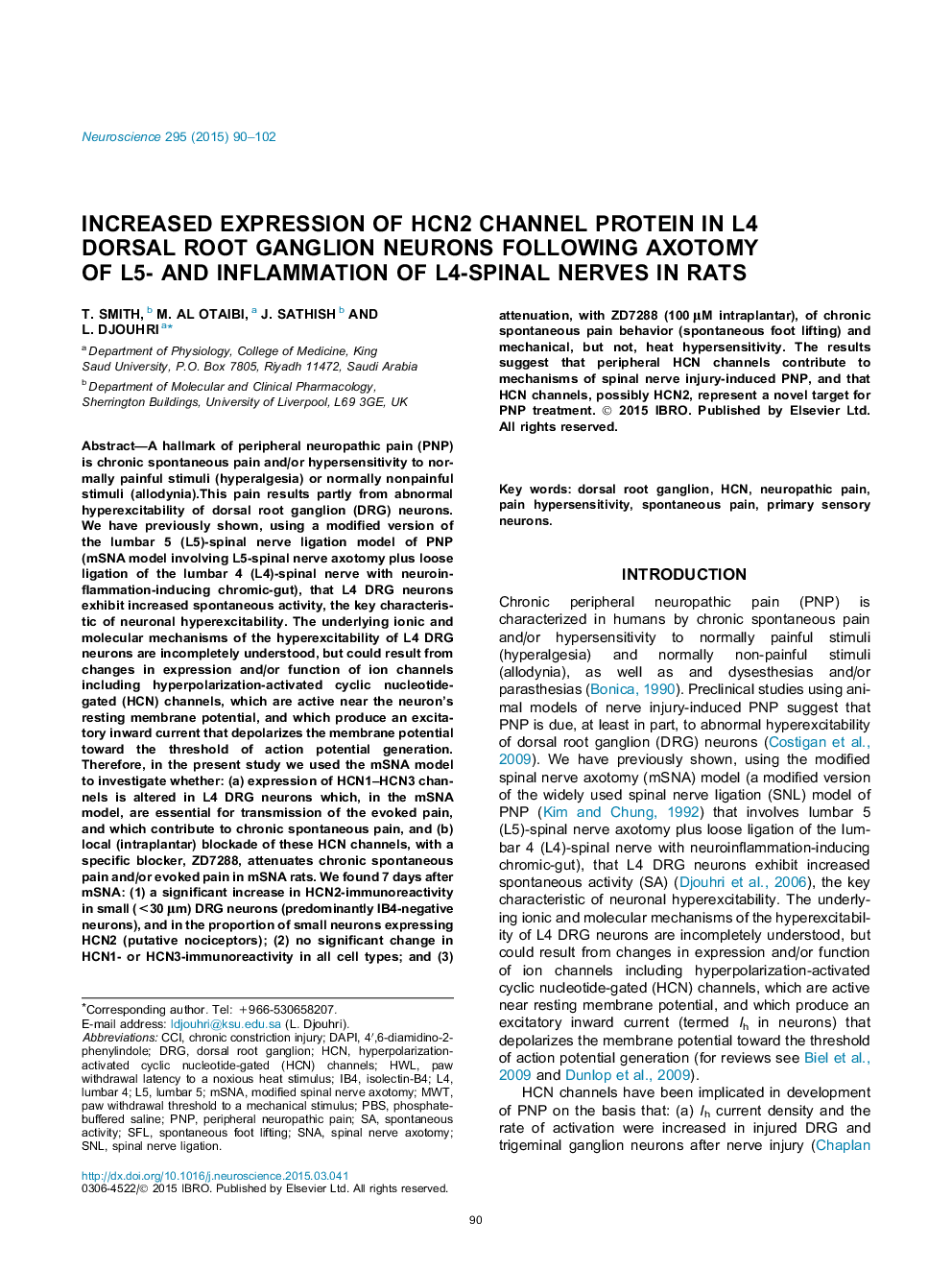| کد مقاله | کد نشریه | سال انتشار | مقاله انگلیسی | نسخه تمام متن |
|---|---|---|---|---|
| 6272485 | 1614781 | 2015 | 13 صفحه PDF | دانلود رایگان |

- Expression of HCN2 is increased in L4 DRG neurons adjacent to axotomized L5 neurons.
- Blockade of HCN channels with ZD7288 attenuates chronic spontaneous pain behavior.
- Mechanical, but not heat hypersensitivity, is also attenuated by HCN channel blockade.
- These differential effects may be mediated by different nociceptor subpopulations.
- The findings implicate HCN channels in mechanisms of peripheral neuropathic pain.
A hallmark of peripheral neuropathic pain (PNP) is chronic spontaneous pain and/or hypersensitivity to normally painful stimuli (hyperalgesia) or normally nonpainful stimuli (allodynia).This pain results partly from abnormal hyperexcitability of dorsal root ganglion (DRG) neurons. We have previously shown, using a modified version of the lumbar 5 (L5)-spinal nerve ligation model of PNP (mSNA model involving L5-spinal nerve axotomy plus loose ligation of the lumbar 4 (L4)-spinal nerve with neuroinflammation-inducing chromic-gut), that L4 DRG neurons exhibit increased spontaneous activity, the key characteristic of neuronal hyperexcitability. The underlying ionic and molecular mechanisms of the hyperexcitability of L4 DRG neurons are incompletely understood, but could result from changes in expression and/or function of ion channels including hyperpolarization-activated cyclic nucleotide-gated (HCN) channels, which are active near the neuron's resting membrane potential, and which produce an excitatory inward current that depolarizes the membrane potential toward the threshold of action potential generation. Therefore, in the present study we used the mSNA model to investigate whether: (a) expression of HCN1-HCN3 channels is altered in L4 DRG neurons which, in the mSNA model, are essential for transmission of the evoked pain, and which contribute to chronic spontaneous pain, and (b) local (intraplantar) blockade of these HCN channels, with a specific blocker, ZD7288, attenuates chronic spontaneous pain and/or evoked pain in mSNA rats. We found 7 days after mSNA: (1) a significant increase in HCN2-immunoreactivity in small (<30 μm) DRG neurons (predominantly IB4-negative neurons), and in the proportion of small neurons expressing HCN2 (putative nociceptors); (2) no significant change in HCN1- or HCN3-immunoreactivity in all cell types; and (3) attenuation, with ZD7288 (100 μM intraplantar), of chronic spontaneous pain behavior (spontaneous foot lifting) and mechanical, but not, heat hypersensitivity. The results suggest that peripheral HCN channels contribute to mechanisms of spinal nerve injury-induced PNP, and that HCN channels, possibly HCN2, represent a novel target for PNP treatment.
Journal: Neuroscience - Volume 295, 4 June 2015, Pages 90-102